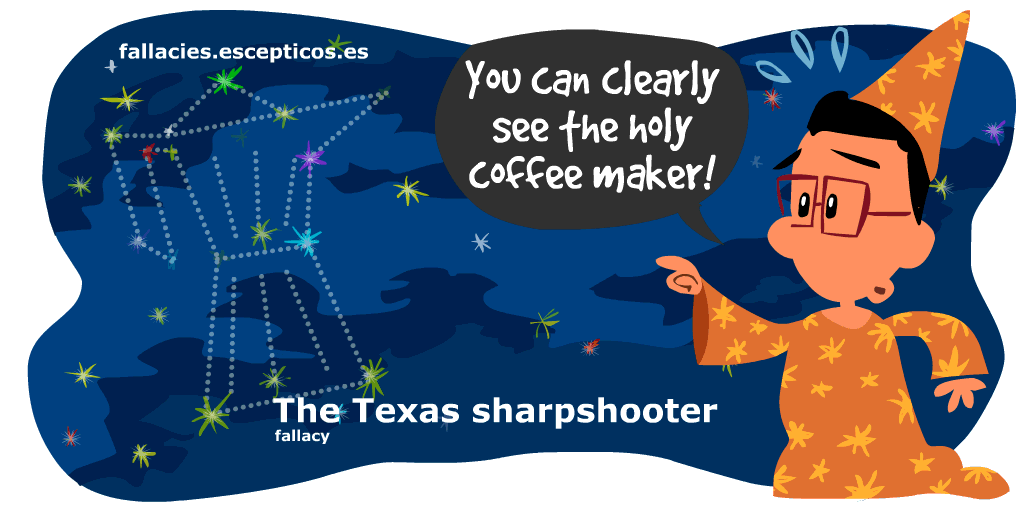Painting the bullseye after shooting, or forcing data to tell us what we want.
Source, wikipedia
In the Texas sharpshooter fallacy unrelated information is interpreted, manipulated or disguised until it makes some kind of sense. The name comes from a joke in which a shooter randomly shot at a barn, and after that he painted a bullseye around each hit and claimed to be a sharpshooter.
Example
Someone dreams of number 7.
Number 7 didn’t come out, but number 362 did.
Nonetheless the premonition gets confirmed by claiming that 3+6-2 equals 7.
To refute it
Generally speaking, proving it is a fallacy could be relatively simple if we find a way to repeat the experiment. For example, in the case of this drawing, we could easily propose an alternative constellation of stars.
Whenever the source is not referenced, both definitions and examples have been extracted from a translation of Jaime Wilson [email protected] based on Stephen’s Guide to the Logical Fallacies. Copyright 1995-1998 Stephen Downes. Brandon, Manitoba, Canada.
These texts have been modified by Miguel A. Lerma and now by us to adapt them -and those taken from Wikipedia- to our format.
